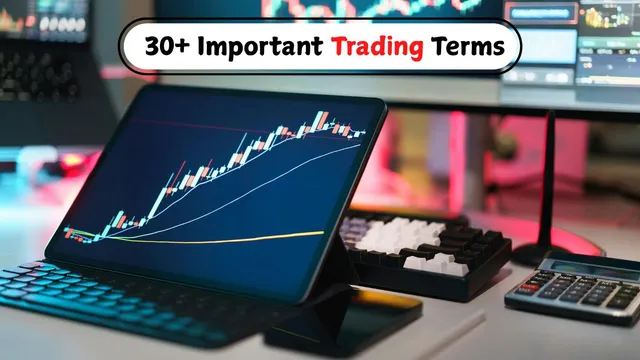- By Aditi Priya Singh
- Tue, 14 Oct 2025 05:37 PM (IST)
- Source:JND
30+ Important Trading Terms: In the dynamic world of trading, knowledge is your most powerful weapon. Knowing the lingo of trading can mean the difference between success and failure, whether you're investing in stocks, forex or cryptocurrencies. Values dropped overnight, leaving many new traders perplexed and in a panic. The recent crash of the cryptocurrency market served as a reminder to everyone of how erratic financial markets can be. This incident brought home once more how important it is to comprehend fundamental trading principles before entering any market.
Every term, from technical ones like stop-loss, liquidity, and market volatility to more straightforward ones like bullish and bearish, is essential to assisting traders in making informed choices. Your ability to recognize opportunities, control risks, and analyze trends will improve as you gain a deeper understanding of these terms.
Important trading terms every new trader must know
Learn more than 30 important trading terms that are frequently used in the stock and cryptocurrency markets with the aid of this guide. Take a moment to learn this terminology before you invest your first rupee or dollar; it could help you avoid costly blunders and enable you to trade with confidence even when the market is volatile.
| No. | Term | Definition |
|---|---|---|
| 1 | Bull Market | Market phase with consistently rising prices. |
| 2 | Bear Market | Period when prices fall for an extended time. |
| 3 | Volatility | Measure of how much prices fluctuate in a market. |
| 4 | Liquidity | How easily an asset can be bought or sold without affecting its price. |
| 5 | Stop-Loss | Pre-set order to sell an asset when it reaches a certain loss level. |
| 6 | Take-Profit | Order to sell when an asset reaches a target profit level. |
| 7 | Leverage | Borrowing funds to increase potential returns (and risk). |
| 8 | Margin | Amount of money needed to open a leveraged position. |
| 9 | Broker | Platform or person who executes trades on your behalf. |
| 10 | Portfolio | Collection of all your investments. |
| 11 | Diversification | Spreading investments to reduce risk. |
| 12 | Market Order | Buying or selling instantly at current market price. |
| 13 | Limit Order | Buying or selling at a specific price or better. |
| 14 | Bid Price | Highest price a buyer is willing to pay. |
| 15 | Ask Price | Lowest price a seller is willing to accept. |
| 16 | Spread | Difference between bid and ask prices. |
| 17 | Volume | Total number of shares/assets traded in a given time. |
| 18 | Market Cap | Total value of a company or cryptocurrency. |
| 19 | Candlestick Chart | Chart showing price movements for a specific time period. |
| 20 | Support Level | Price at which an asset tends to stop falling. |
| 21 | Resistance Level | Price at which an asset tends to stop rising. |
| 22 | Trend Line | Line showing general direction of market movement. |
| 23 | Short Selling | Selling borrowed assets with hopes to buy them back cheaper. |
| 24 | Long Position | Buying an asset expecting its price to rise. |
| 25 | Technical Analysis | Studying charts and data to predict price movements. |
| 26 | Fundamental Analysis | Evaluating a company or asset’s real-world value. |
| 27 | FOMO | "Fear of Missing Out": urge to trade due to hype/rising prices. |
| 28 | FUD | "Fear, Uncertainty, Doubt": negative emotions causing panic selling. |
| 29 | HODL | "Hold On for Dear Life": crypto slang for holding despite price drops. |
| 30 | Whale | Trader/investor holding a large amount of an asset. |
| 31 | Pump and Dump | Artificially raising prices before mass selling. |
| 32 | Altcoin | Any cryptocurrency other than Bitcoin. |

